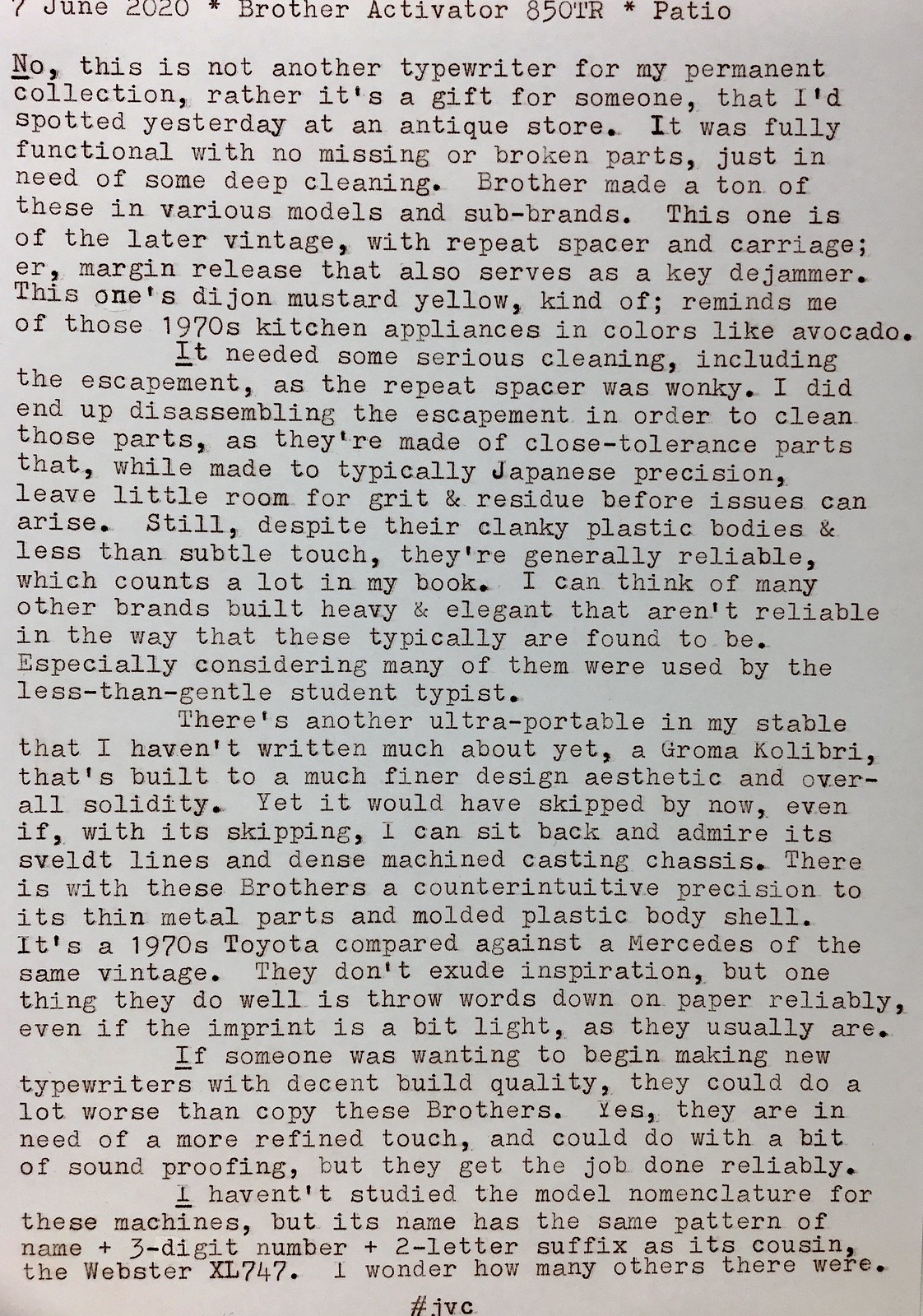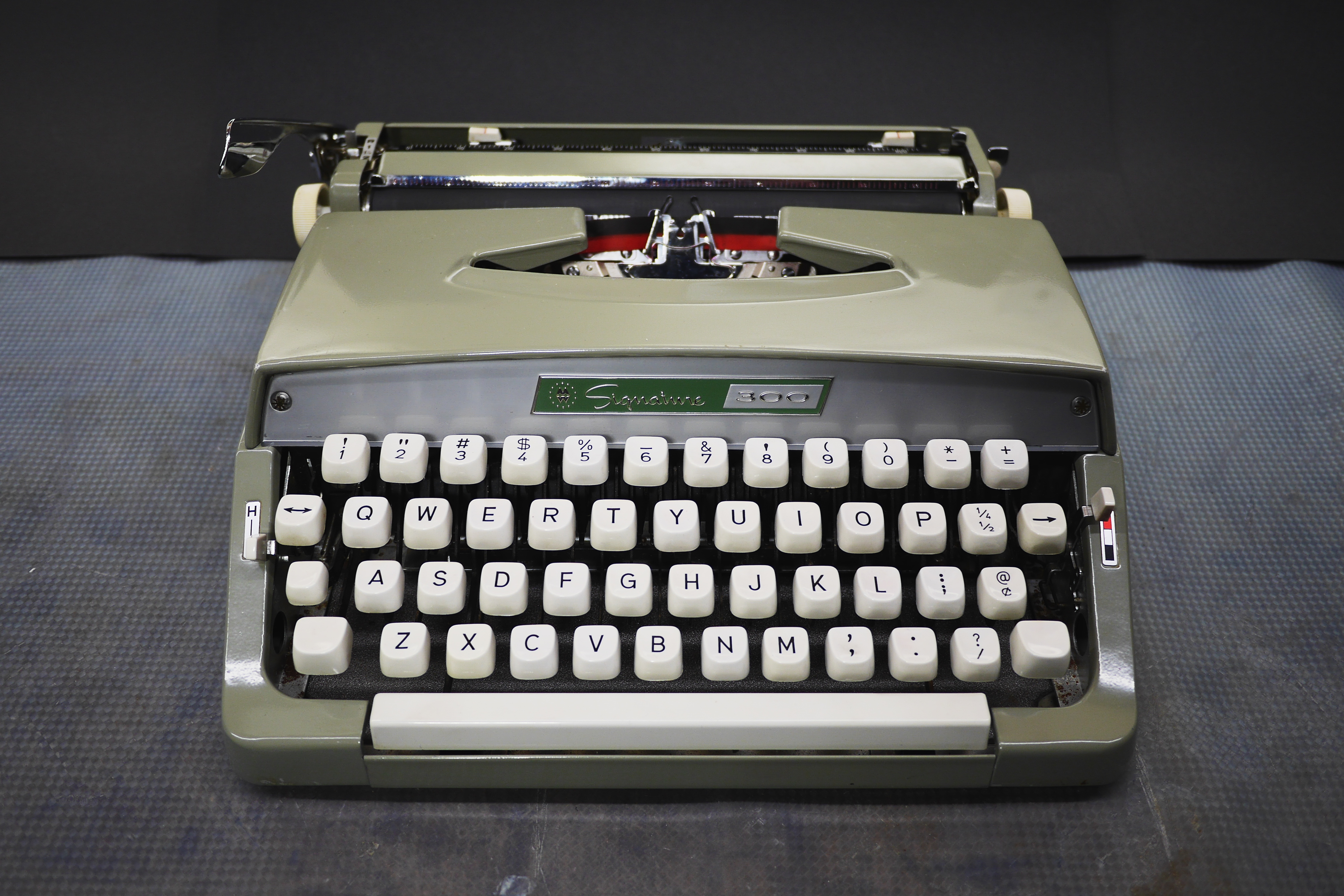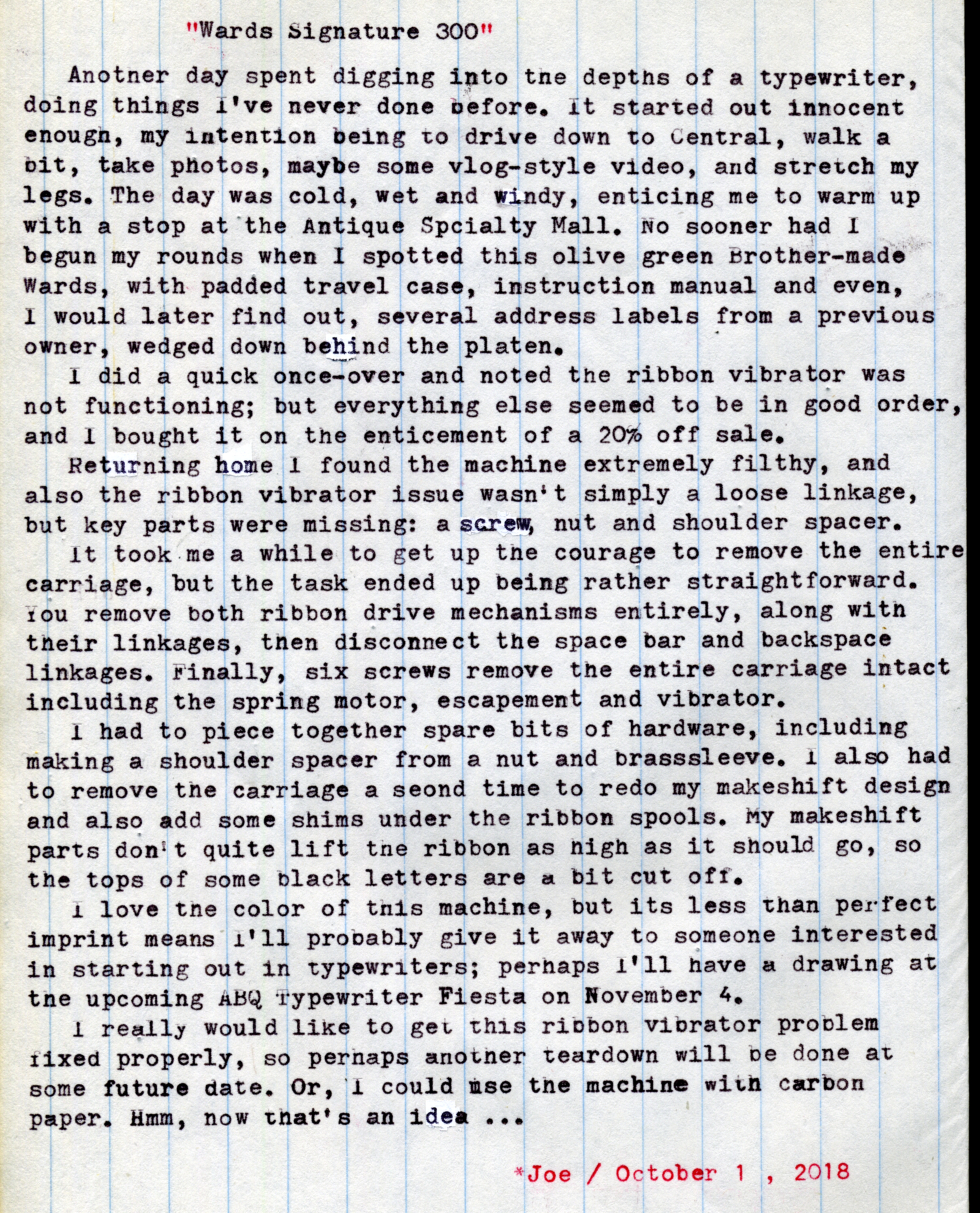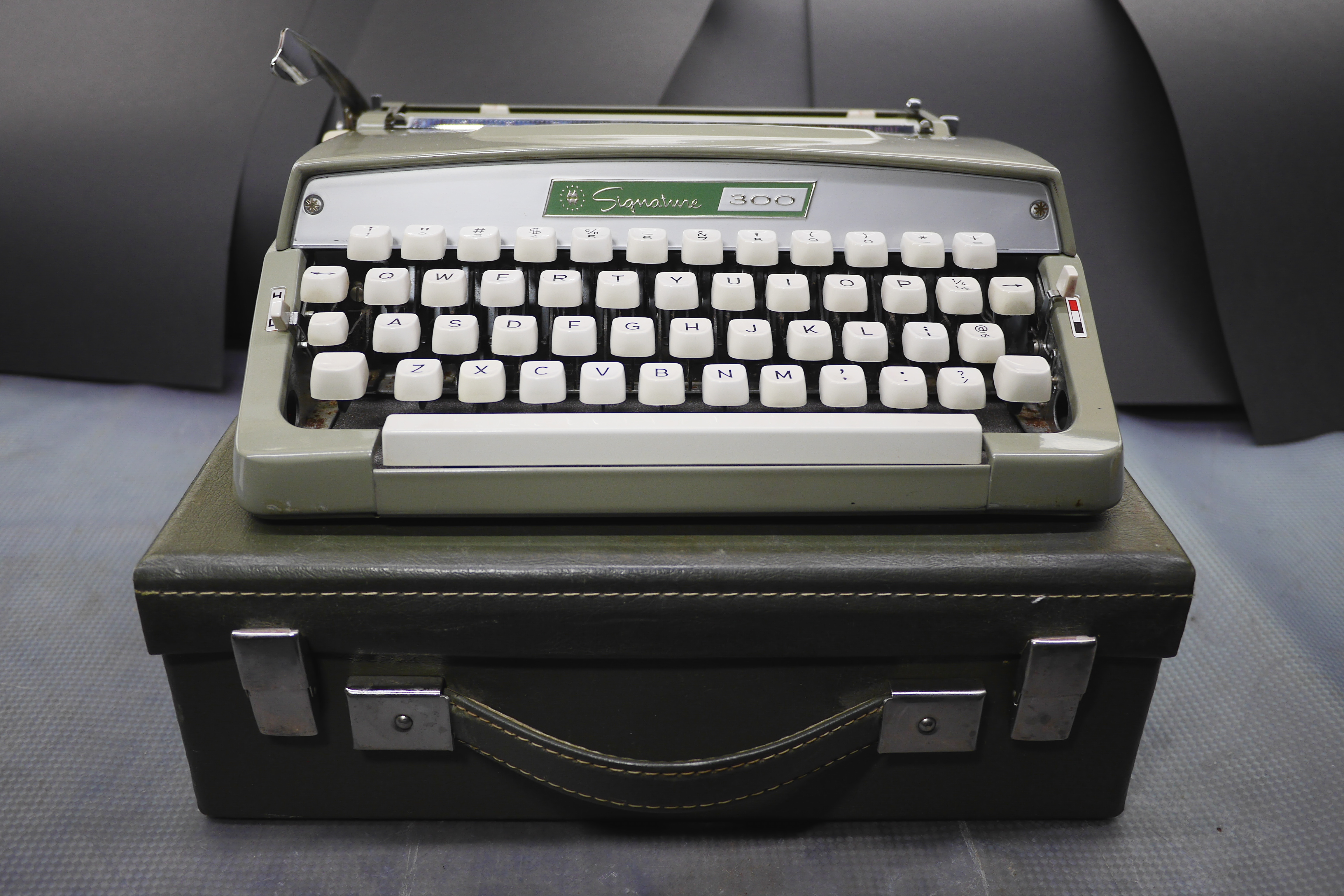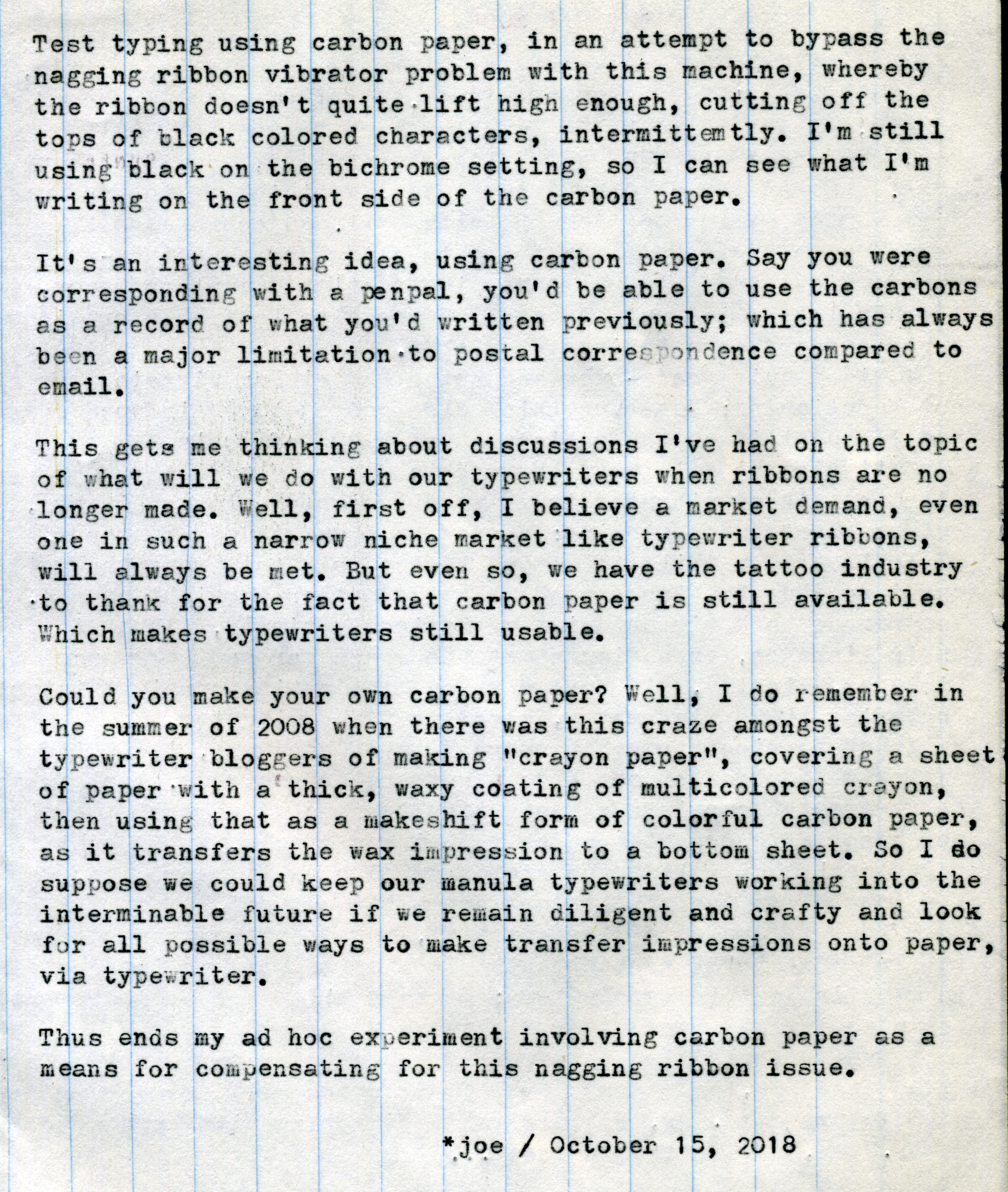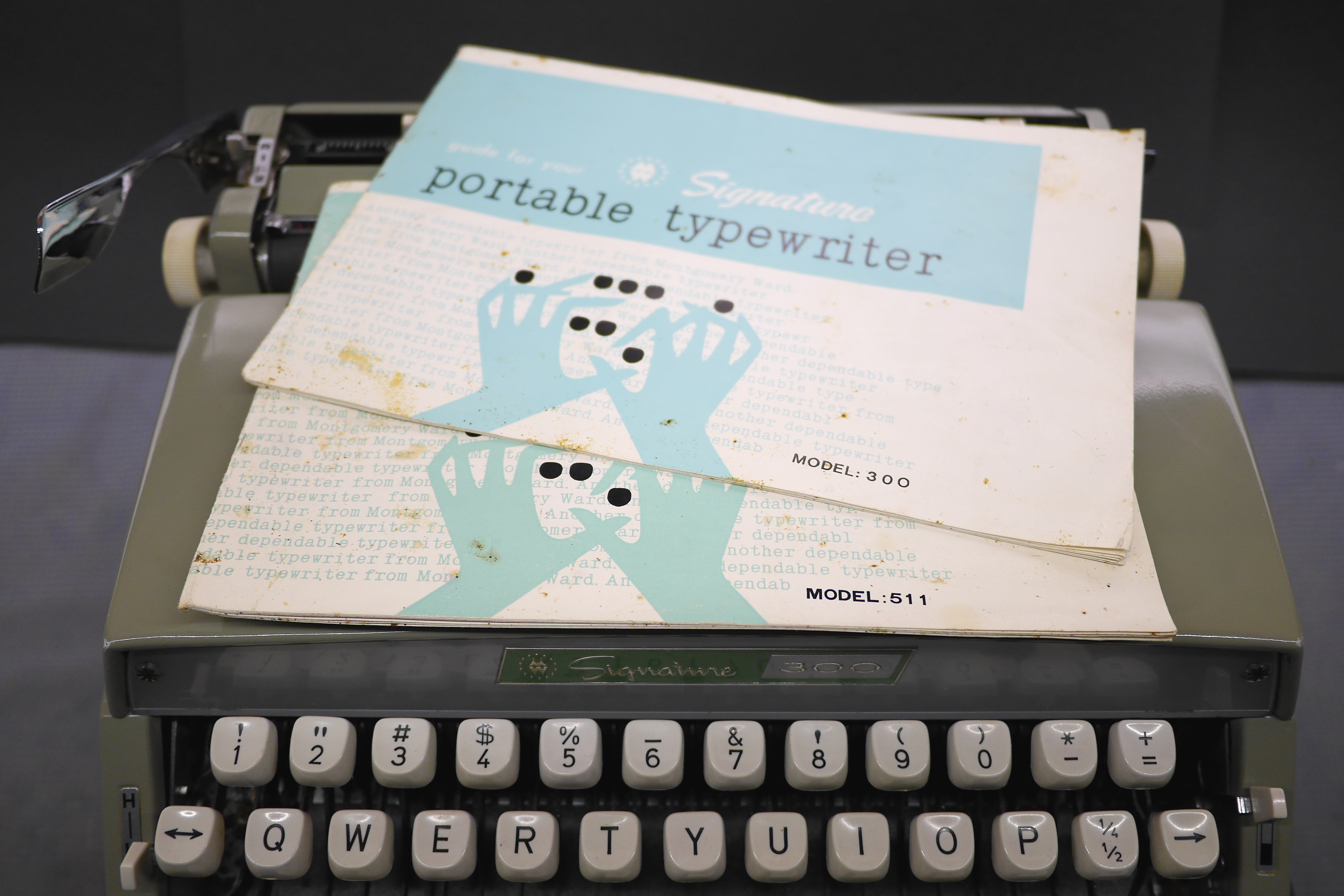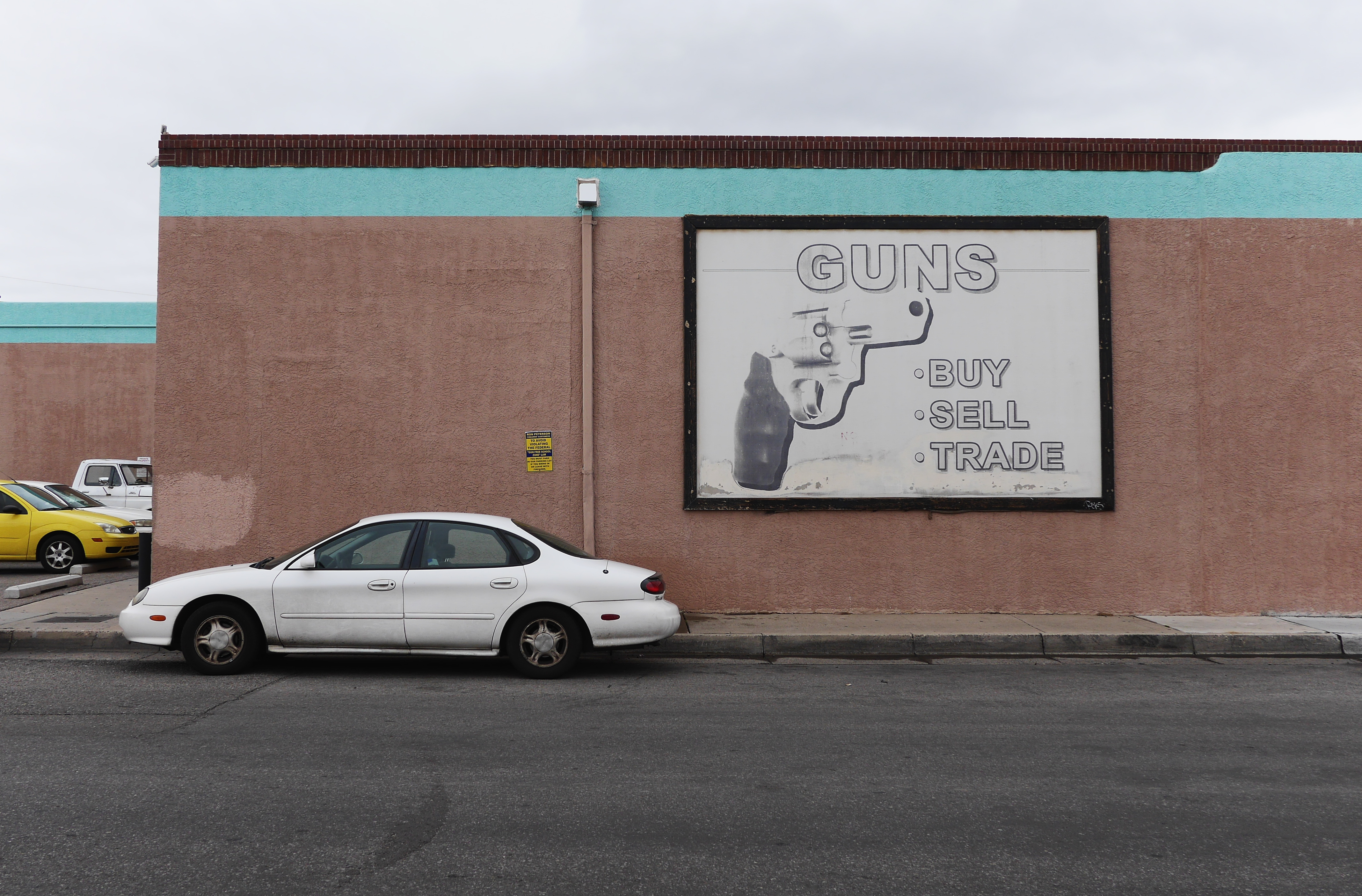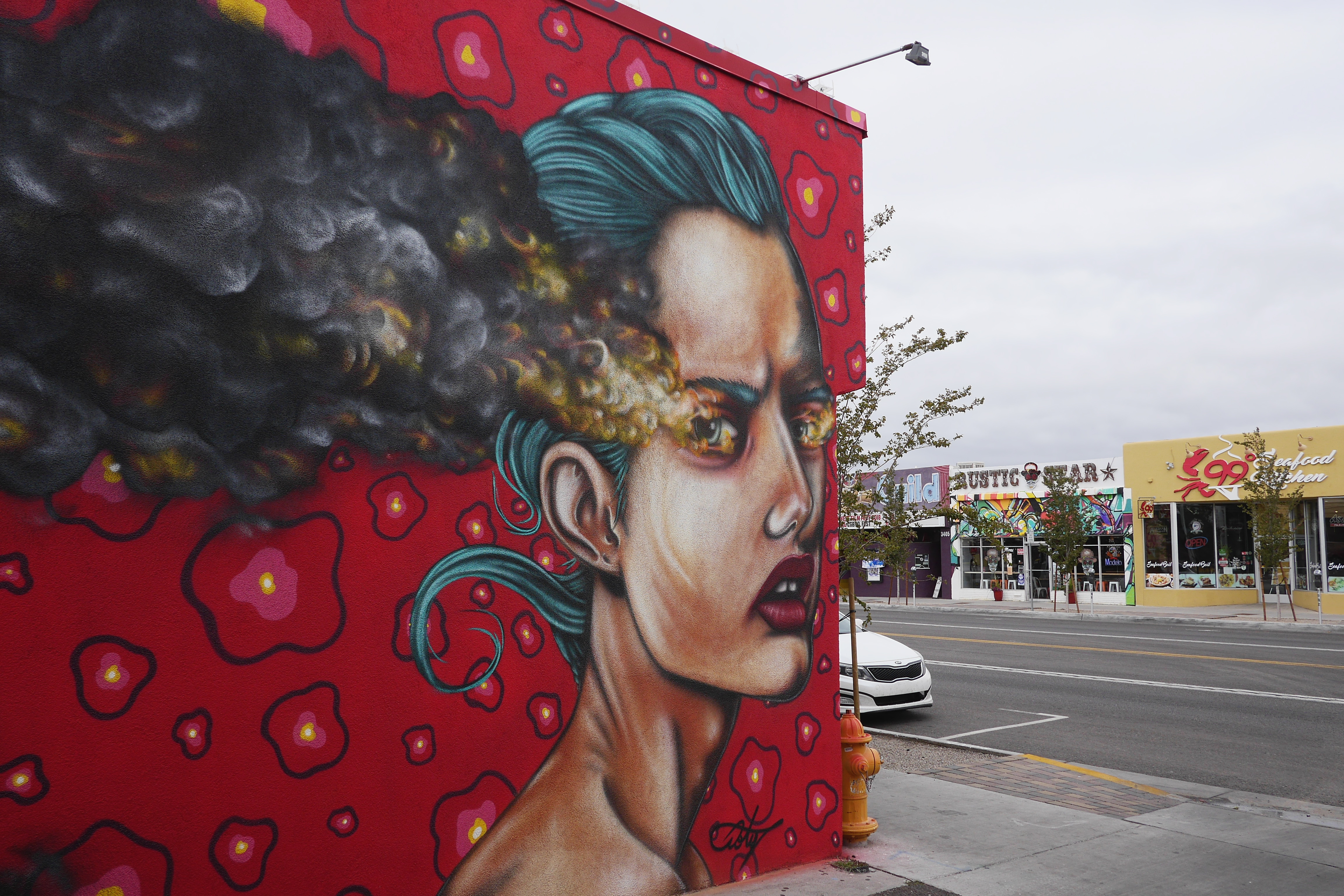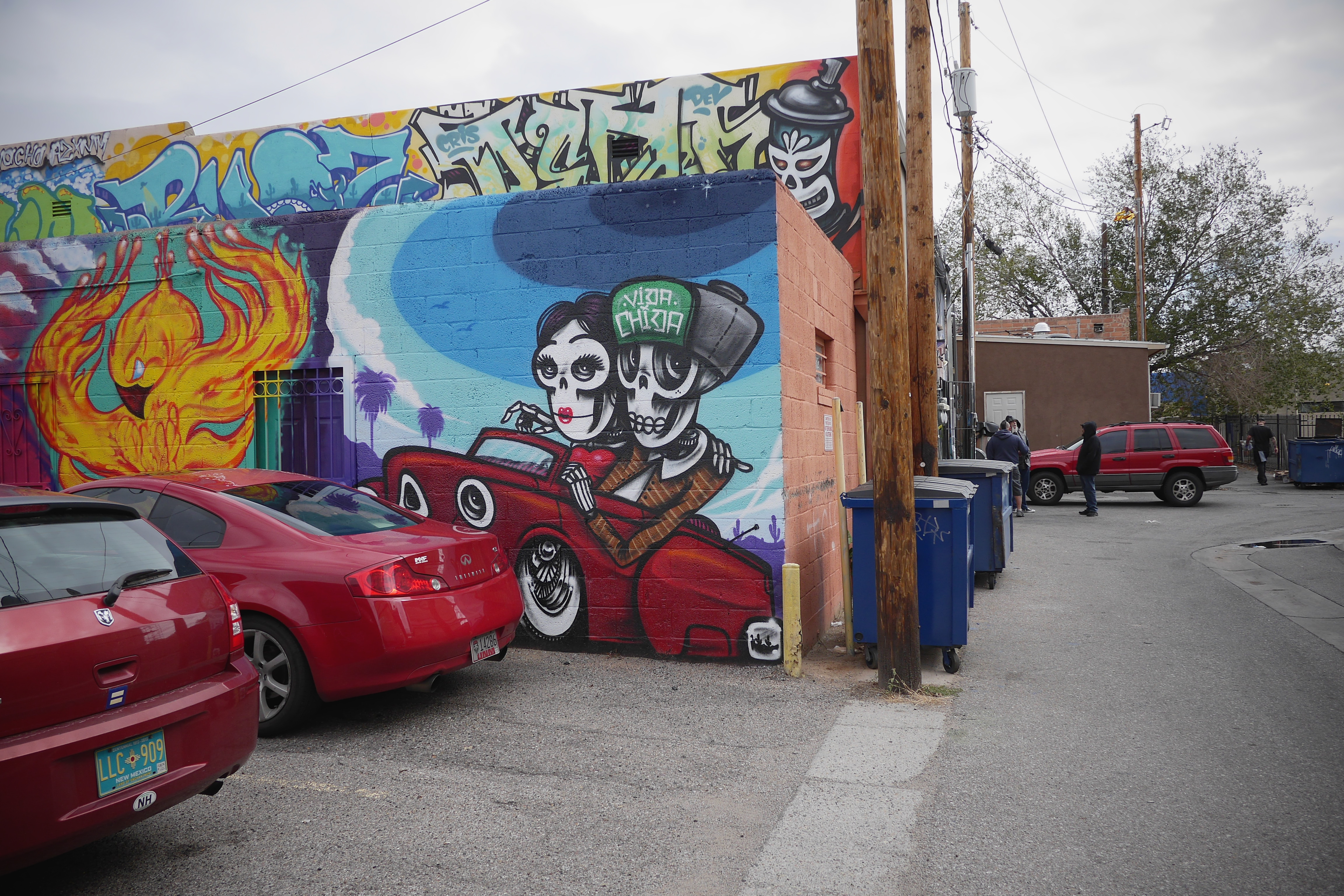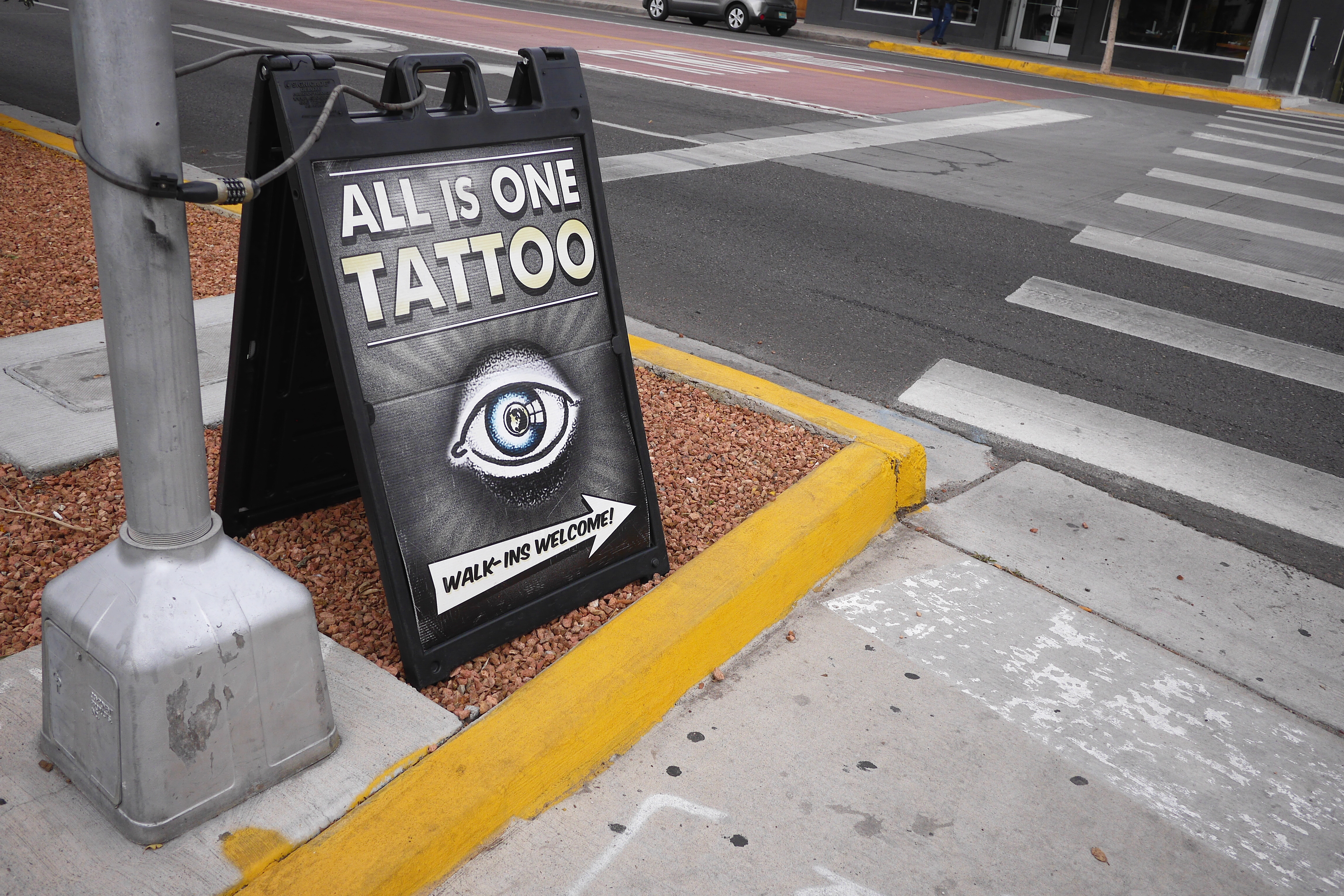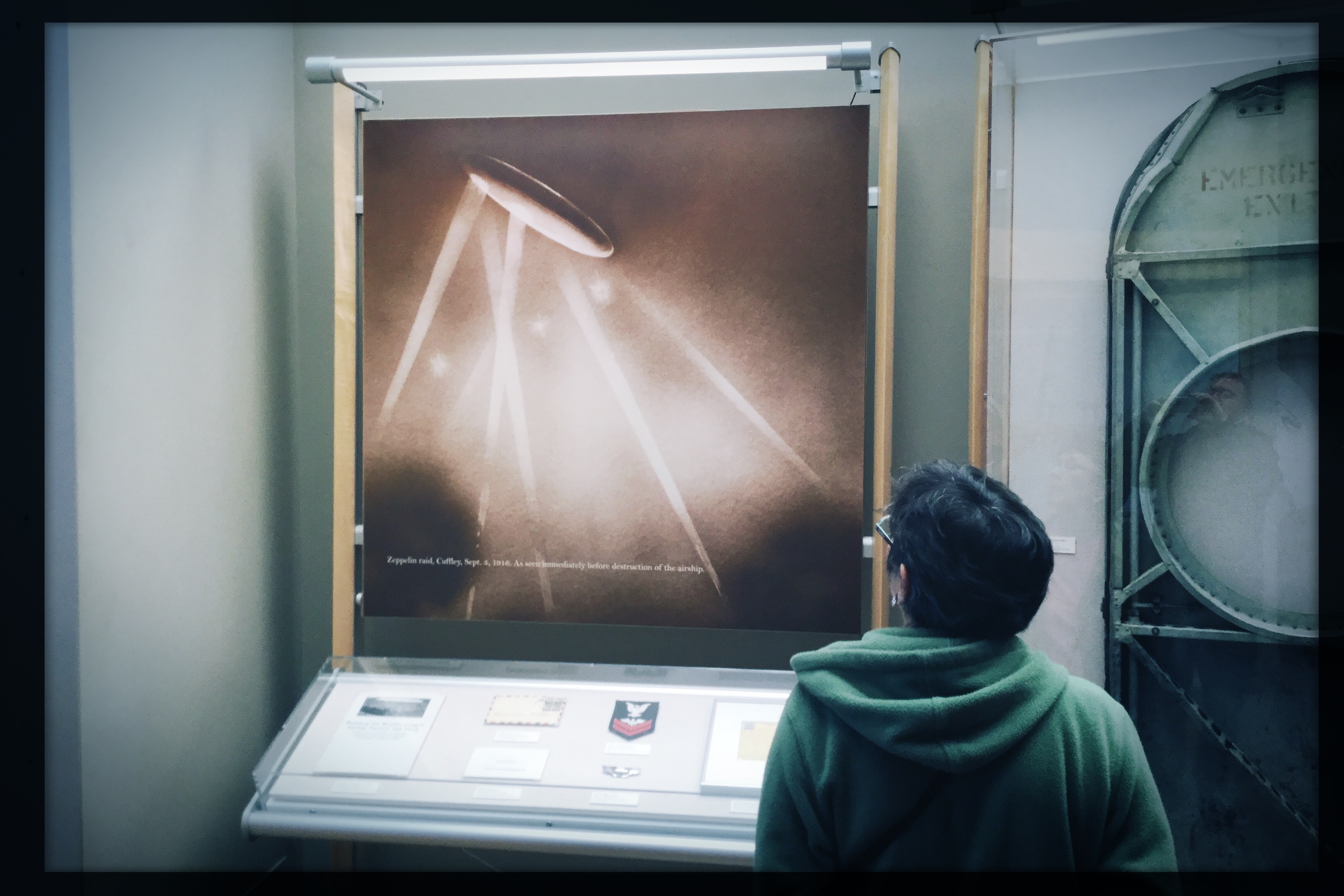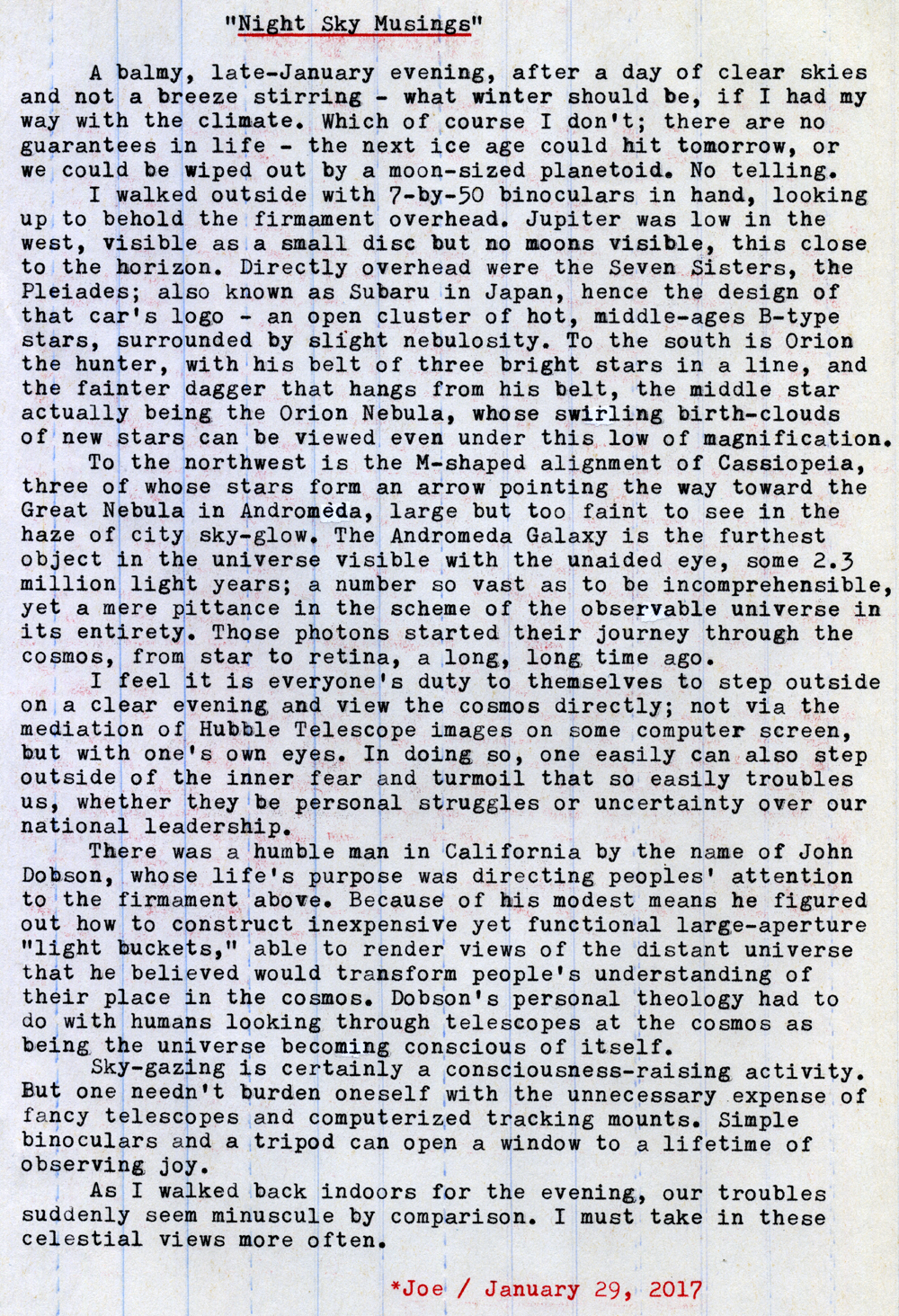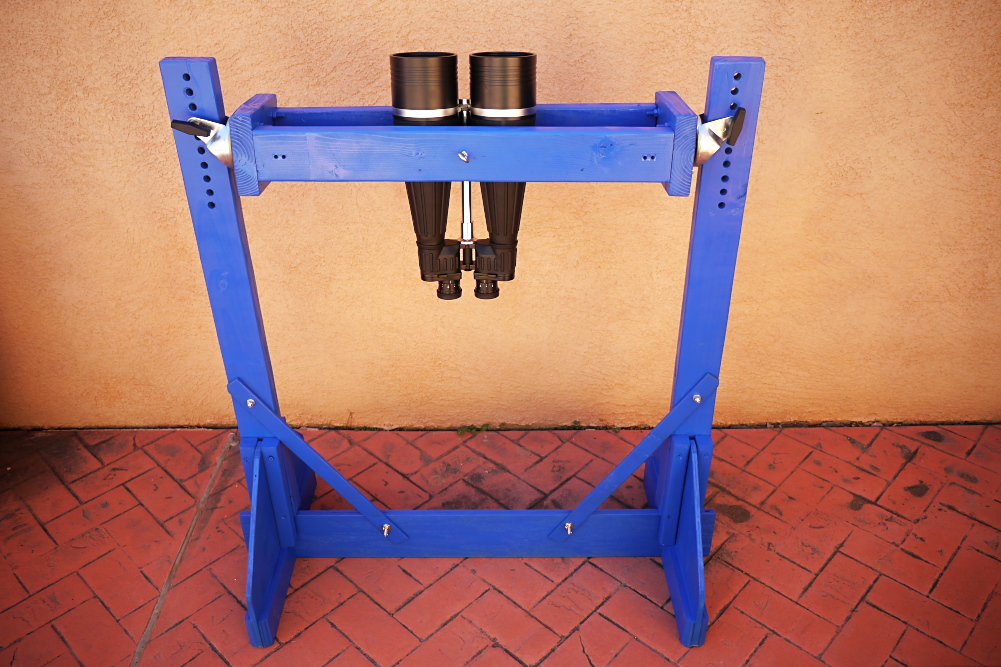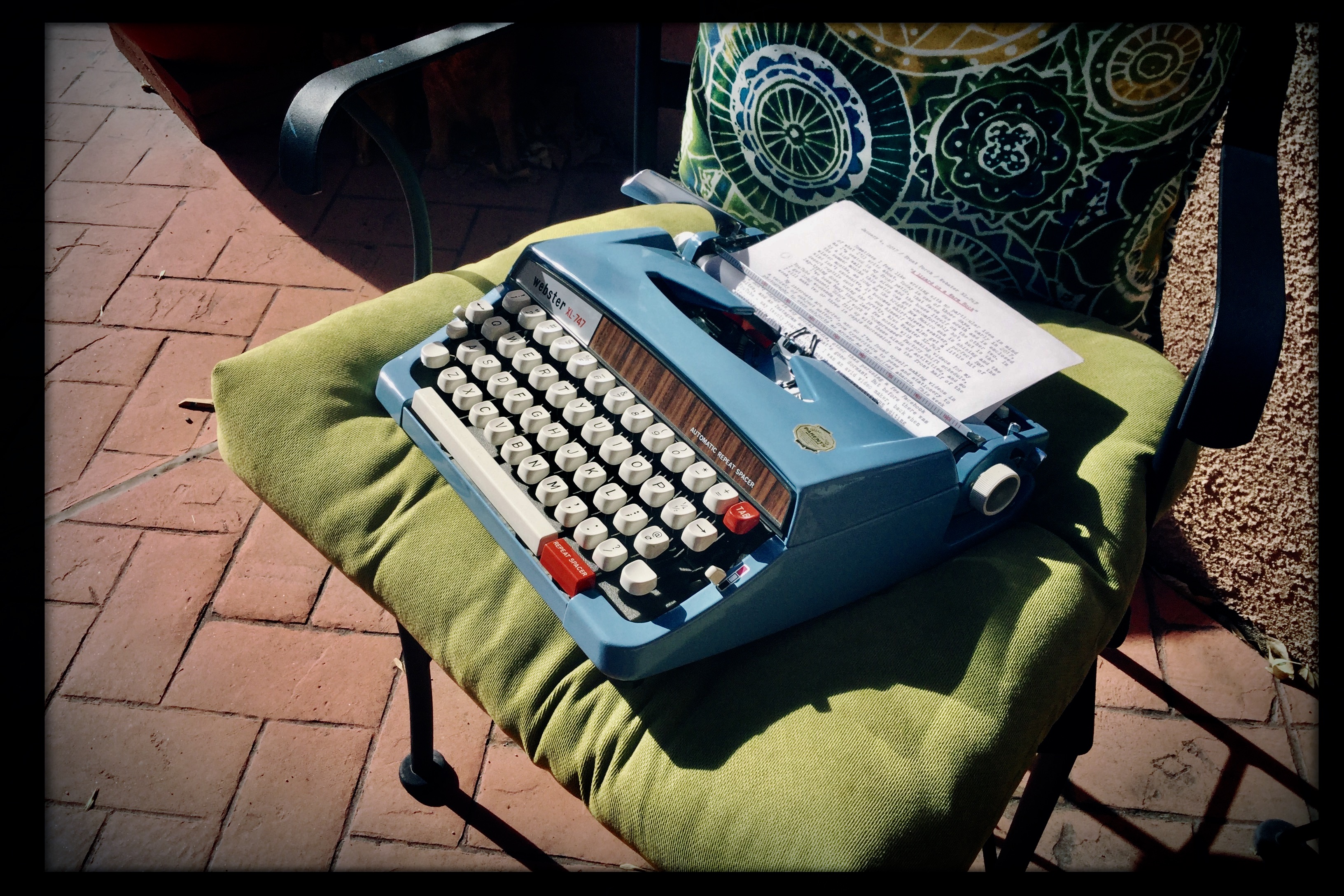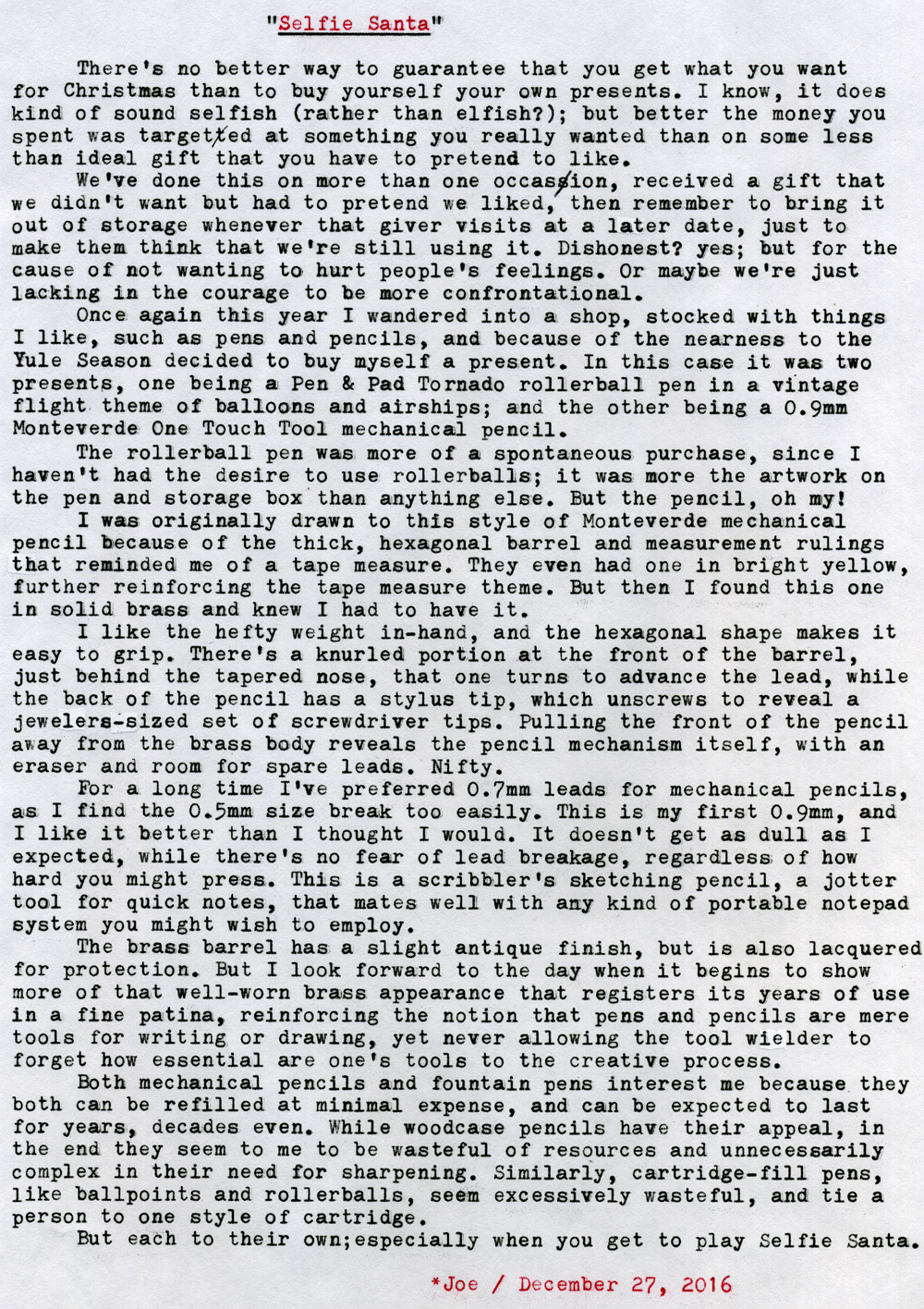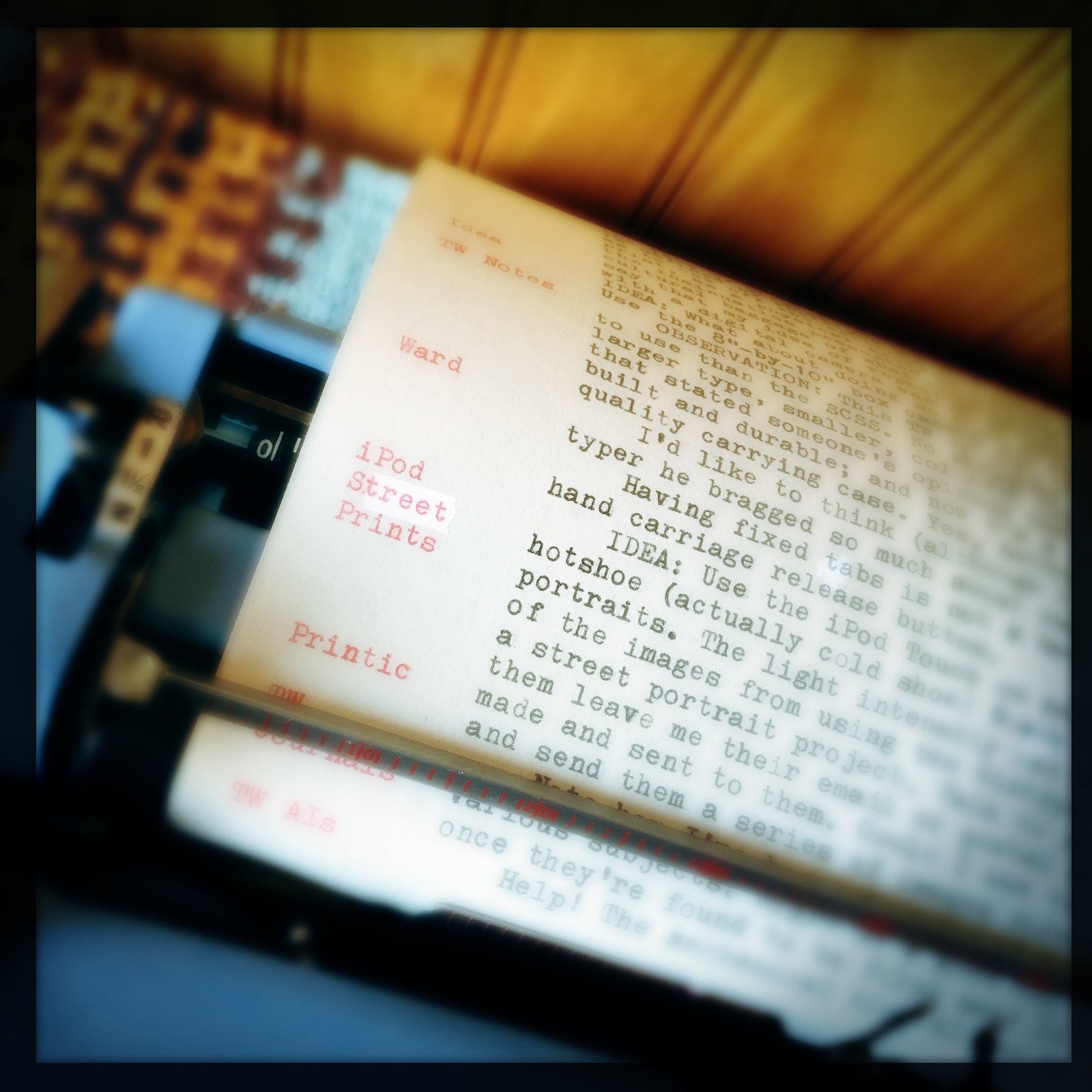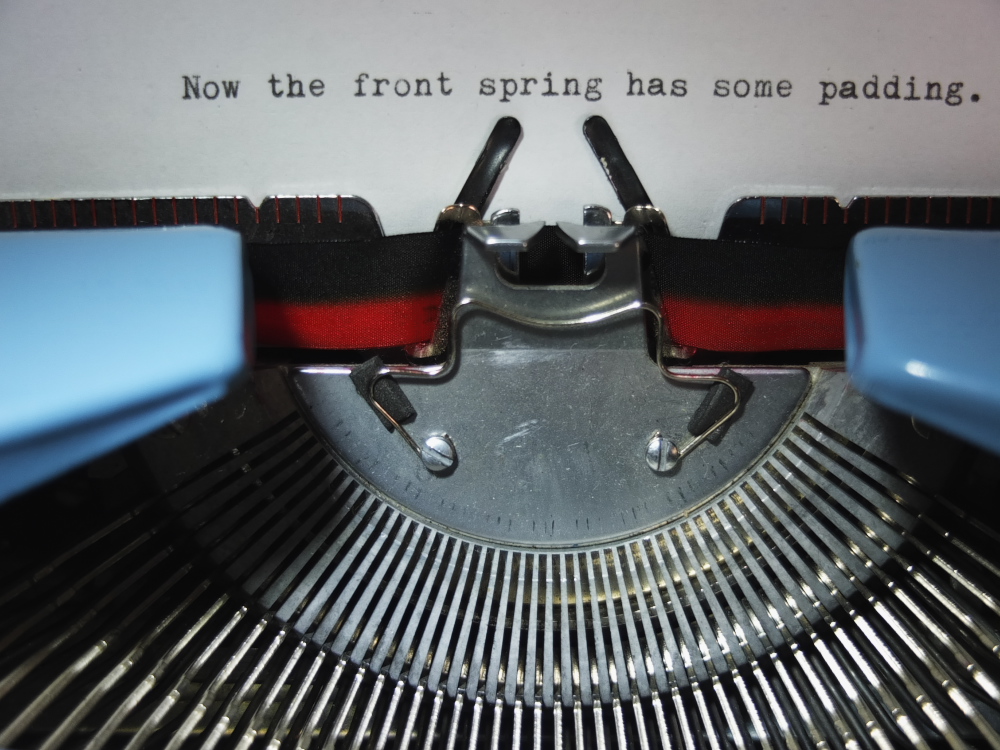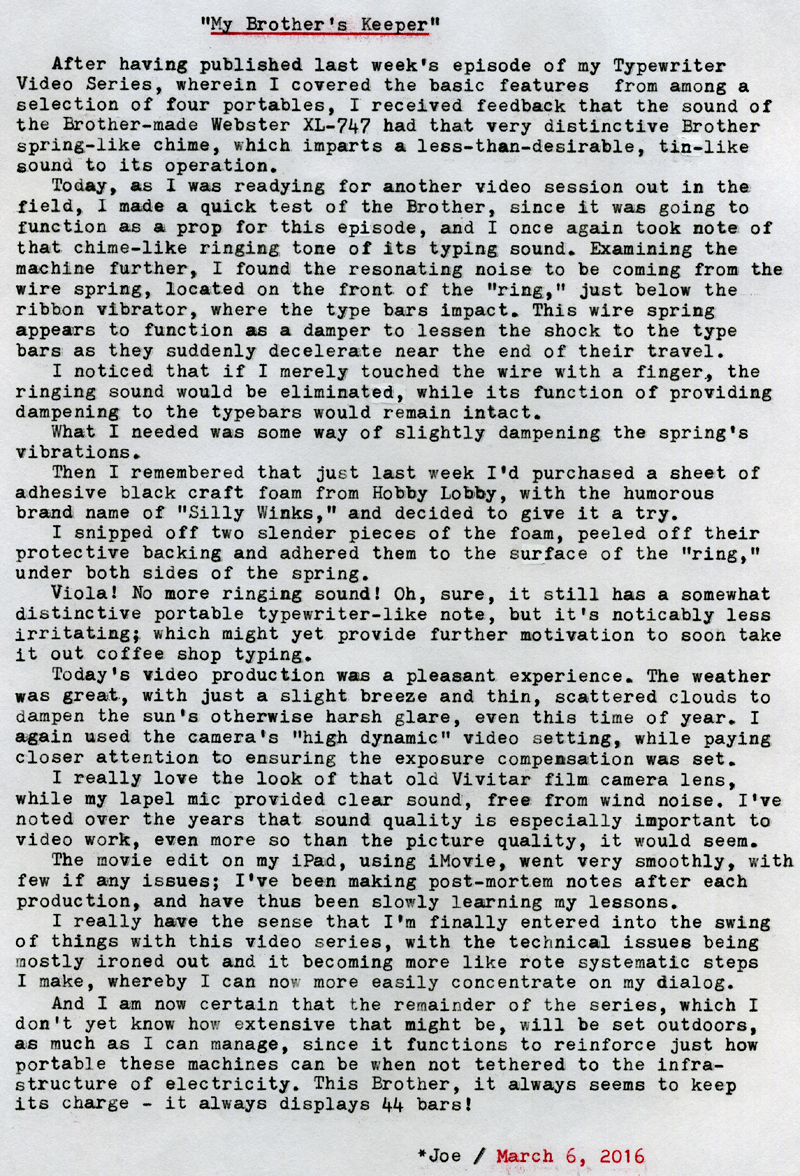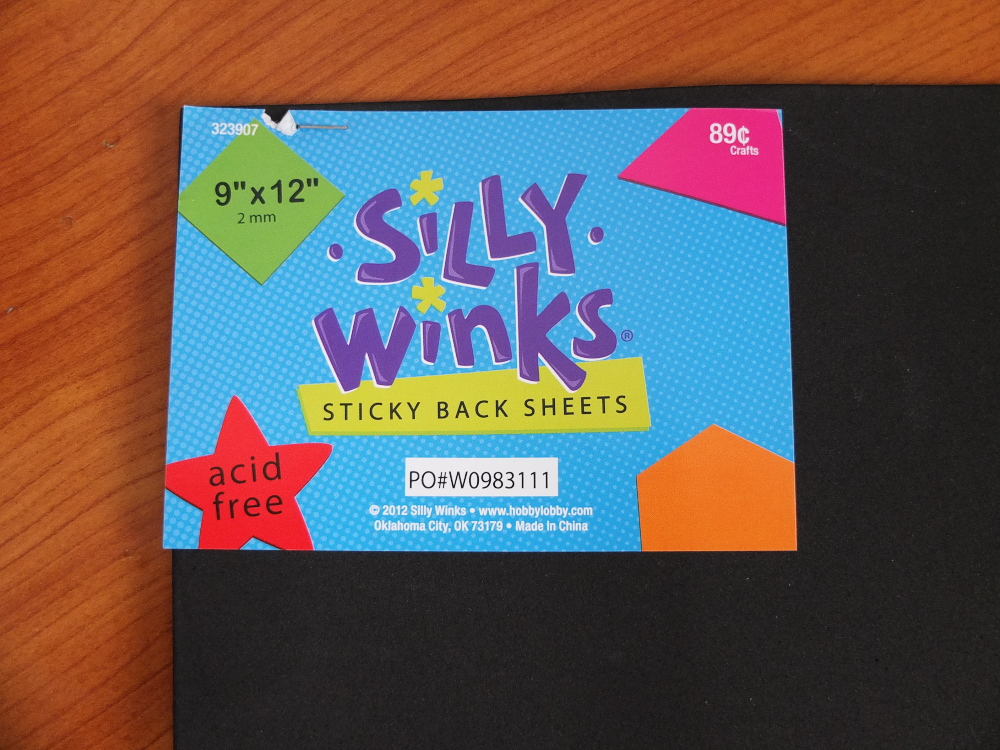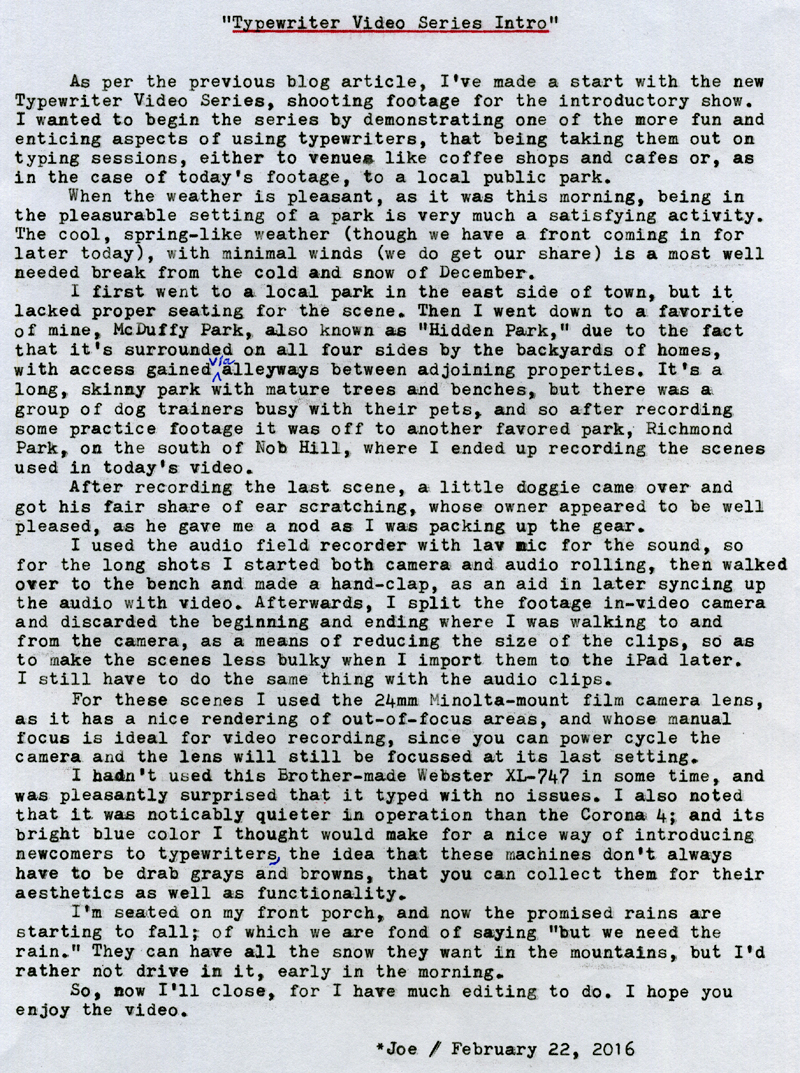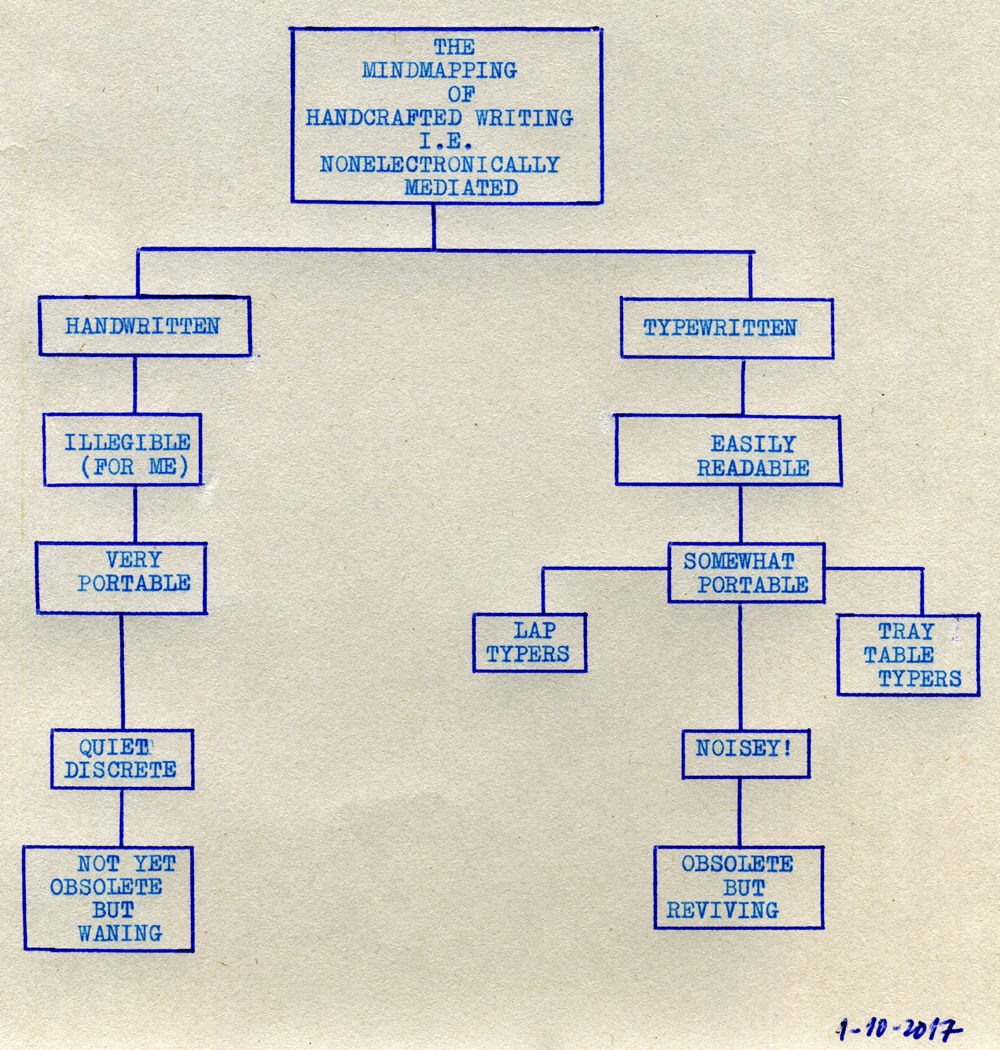
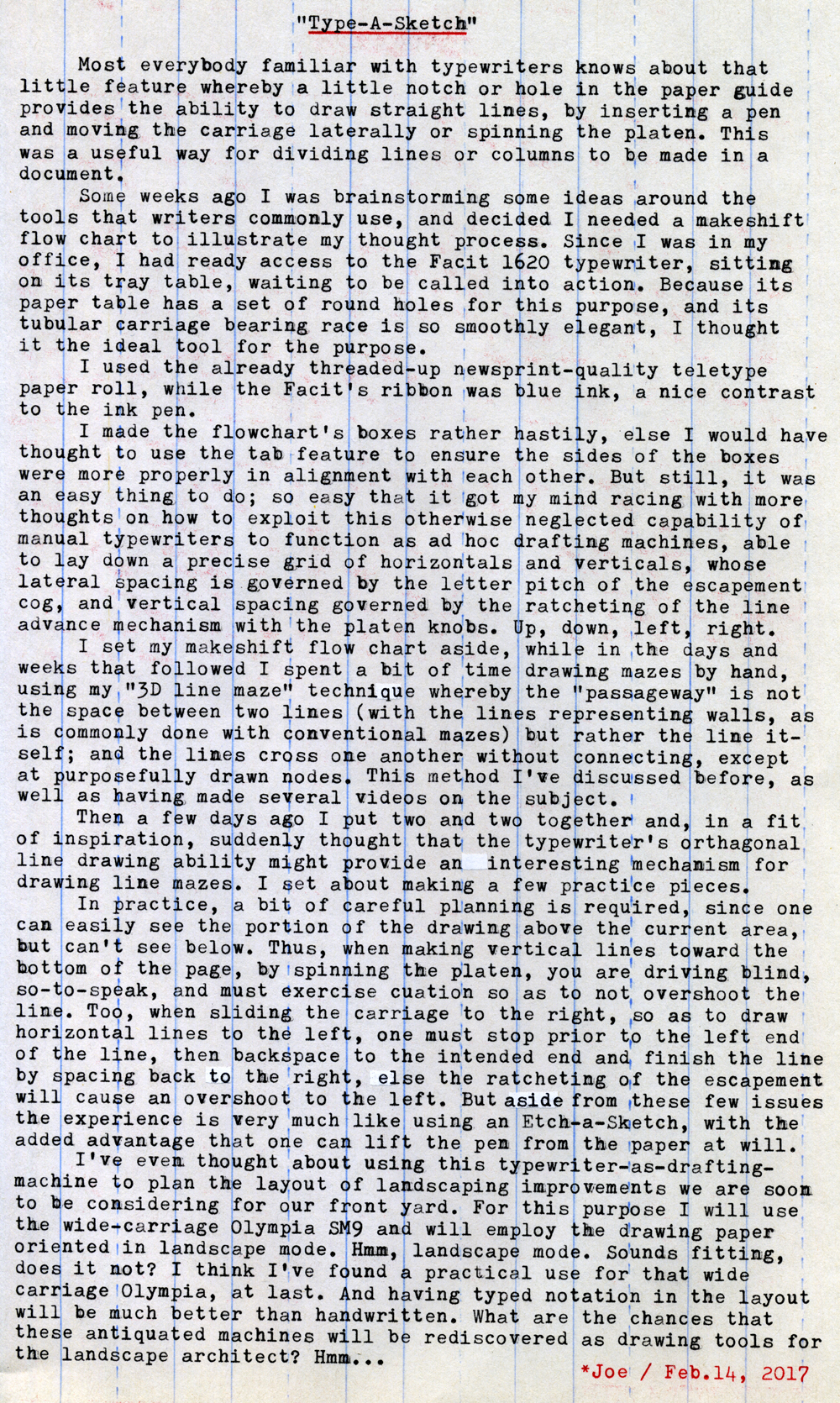 Post-Script:
Post-Script: See Typewriter Video Series Episode 56 for more on using the manual typewriter as a mechanical drafting machine.
Here's the line maze I drew today, using the Facit 1620 and Bic Cristal blue medium point pen:
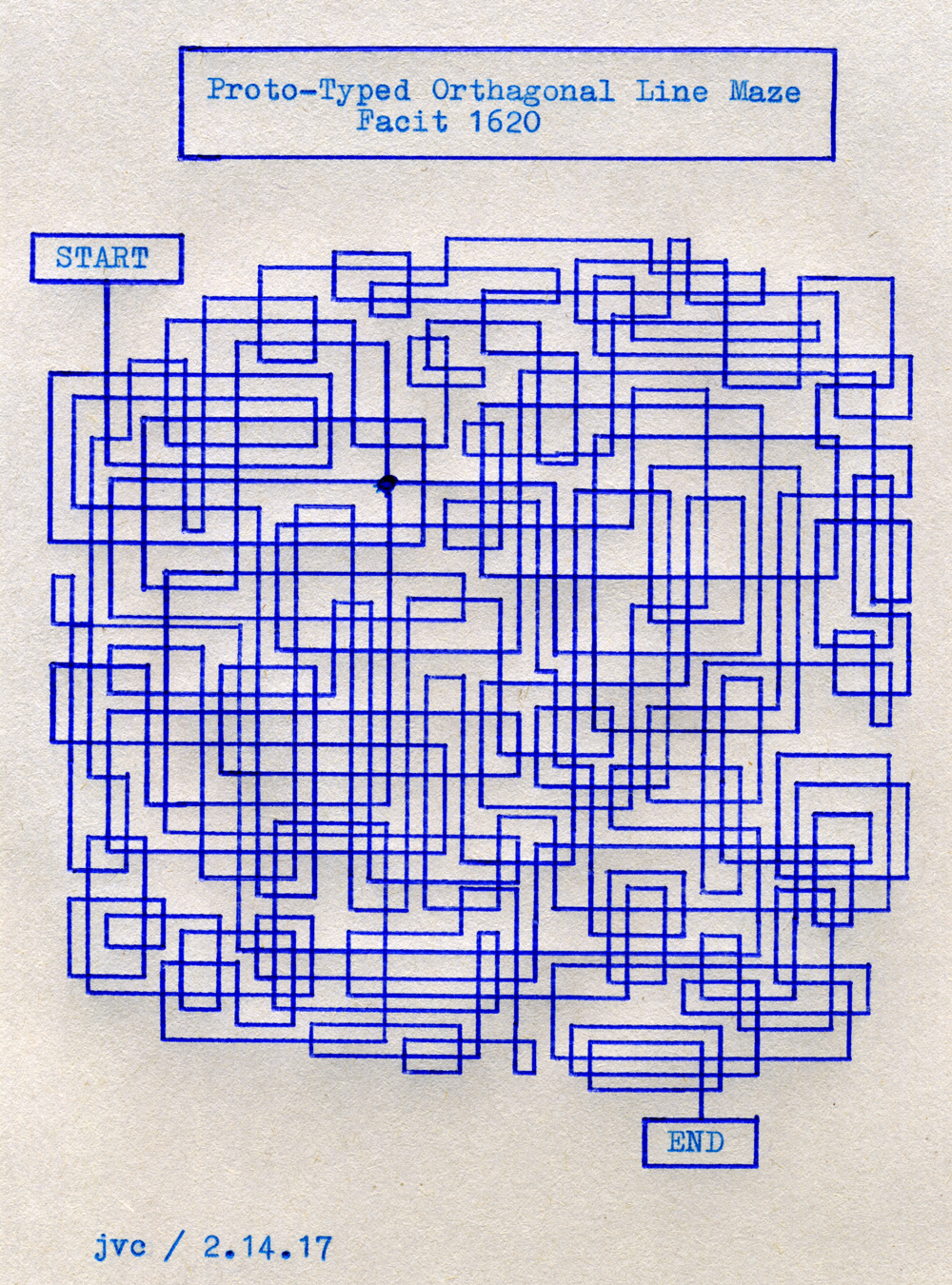
As is the case with all of my so-called "line mazes," you follow the line itself, rather than the space between the lines. Conventional mazes use the space between lines as the passageway, with the lines to either side representing the walls of the maze. My line mazes are more like 3D routing diagrams. The lines cross over one another and don't make a turn until you get to an elbow (or corner); lines only connect to one another at a "node." There's only one node in this maze, the bold dot where four lines converge.
You might notice that I had to hand-draw the node dot; I tried typing an asterisk for the node, but the alignment between the typed characters and the pen holes in the paper guide of my Facit 1620 are not exact.
This was more of a test drawing than a really challenging maze. I find using a typewriter as a form of mechanical drafting machine is rather fun. The horizontal spacing of the vertical lines is governed by the character spacing as defined by the escapement mechanism; while the vertical spacing of the horizontal lines is governed by the ratcheting of the line advance mechanism. Thus, the smallest resolution you can draw - the closest the lines can get to each other - is limited by this mechanical, orthographic grid system of the typewriter's mechanism.
You can move the drawing point in any of four directions. Horizontal movements are done by either the space bar, the backspace key or manual movement of the carriage via the carriage release lever. It's best to draw from left to right (move the carriage from right to left), because backspacing causes the carriage to overshoot the end point, due to the nature of the escapement mechanism. Similarly, I find it better to draw vertical lines from bottom to top, since you can see more easily the drawing and where you need to stop.
If your typewriter has more than one notch or hole for a pen in the paper guide, it's best to choose one and stick with it, since the two holes or notches might not be exactly aligned to the grid system of the mechanism, or each other.
I used a ballpoint pen for these drawings, but another type of technical drawing pen would be preferred. As well as better quality paper than the newsprint-quality teletype paper roll I was using.
If you have a wide-carriage machine, this would be ideal for drawing landscape-oriented illustrations on full-sized paper.
Bonus: Here's a line-maze version of a labyrinth, hand-drawn. It could have benefited from the orthographic alignment of the Type-A-Sketch, so as to make the lines much straighter. Being a labyrinth instead of a maze, it only has one passage, so you can't get lost. Start at either end. As with all line routing networks, the lines cross over one another without connecting. Lines go straight until they bend at an elbow. I rather enjoyed coloring the various cells in. My personal rule is two adjoining cells can't have the same color; similar colors can only touch at their corners. Oh, the title of this piece is "Centripetal Labyrinth with Hysteresis, 1.0." Don't ask me why. I think it has something to do with the way the lines converge on, then fly away from, the center point, like a comet in a highly elliptical orbit. As with all "art-speak," it only really matters to the artist, and the academic community. In this case, there's only me, since no one would seriously consider this to be "art."
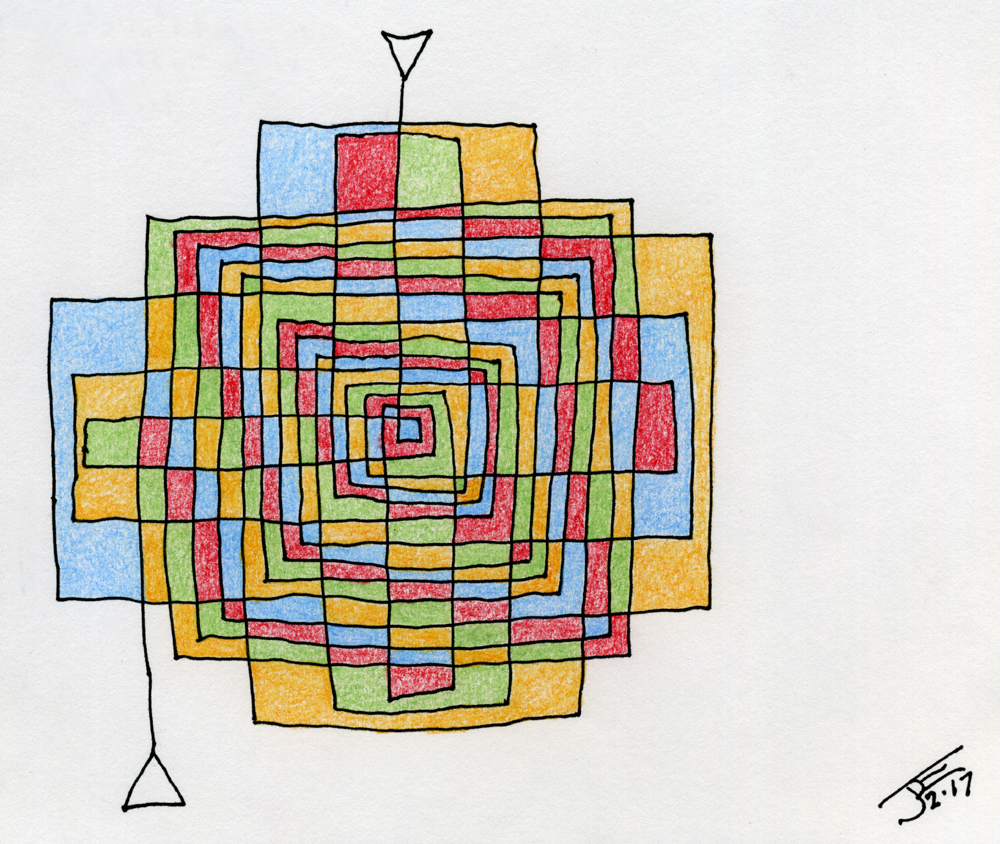
Typecast via
Brother Charger 11, lap-typing in the front courtyard on a cold day.
Labels: Brother, Facit 1620, Mazes, paper craft, Type-A-Sketch, Typewriter video series

